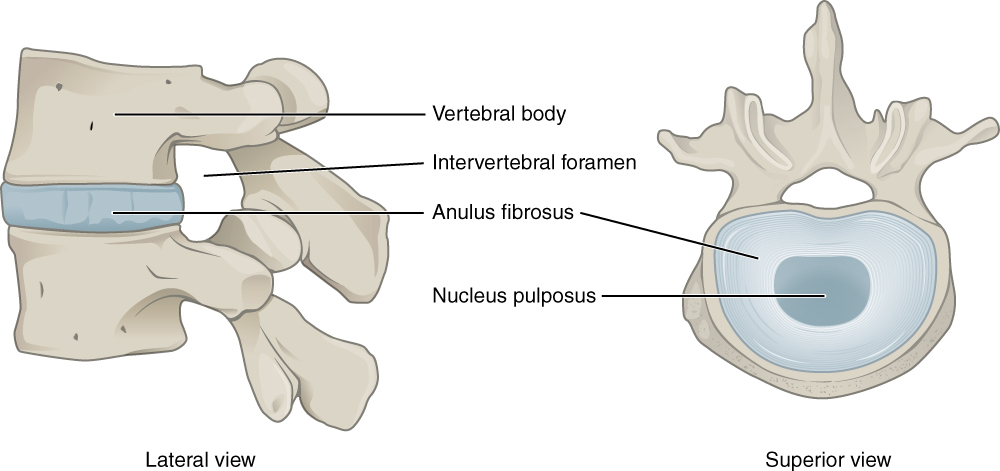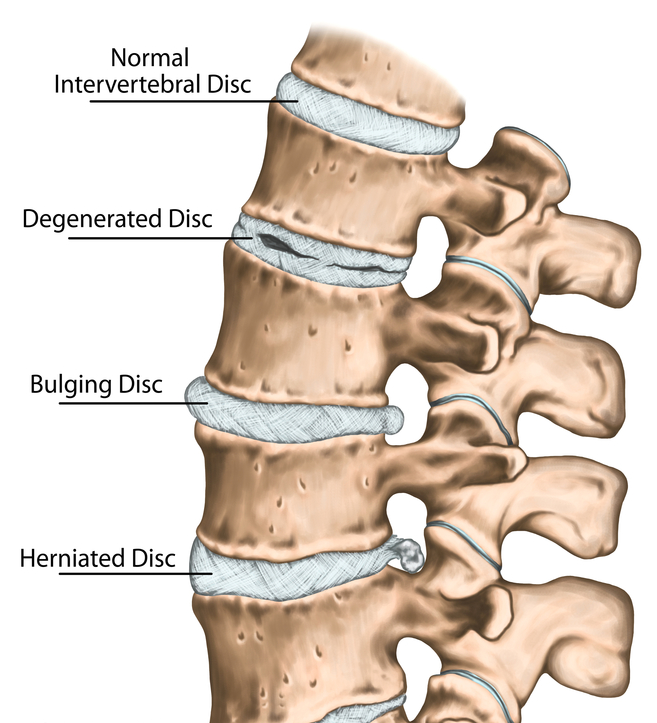May 16, 2017
I think it’s safe to say that most of us have heard of someone or have been told themselves that they have a diagnosis of a disc bulge or herniation. So, what does it mean, and more importantly, what should you do? The answer is, that it depends on your situation. However, I think a great initial step is to seek out a skilled physical therapist (PT). PT’s are well versed in treating a bulging or herniated disc non-invasively, and return our patient to their prior level of function without the need for injections or surgery. But before we get into that, let’s talk about what a disc bulge or herniation is and what can cause it.
What is a spinal disc?
The disc is what connects and provides cushioning between the bones of our spine. It is made of up two primary parts: the nucleus pulposus and the annulus fibrosus. The annulus fibrosus is the thick ligamentous structure made up of multiple layers. It is securely connected to the bones (vertebral body) above and below. It also acts to keep the nucleus pulposus in the middle of the disc. The nucleus pulposus is a jelly-like material that helps to absorb the shock in the spine from compression and torsion forces.
What is a Bulging Disc
A bulging disc is when a portion of the nucleus pulposus is pressed out towards the outer layers of the annulus fibrosus and causes it to stretch, creating a bulge. A disc bulge is very treatable with skilled physical therapy services. However, if left untreated some disc bulges can turn into disc herniations.
What is a Herniated Disc
A herniated disc is when the last layer of the annulus fibrosus fails and the nucleus pulposus gets pushed out into the space where the nerves lie. The inflammatory proteins from this process can cause irritation to the nerve, and/or the nucleus pulposus can compress the nerve causing aggravation. This can result in symptoms ranging from neck or low back pain, to pain, numbness and tingling down the arms or legs or even weakness in the arms or legs. Like a bulging disc, a herniated disc can also be rehabilitated via skilled physical therapy.
What Causes Disc to Bulge or Herniate
There can be multiple causes of a disc bulge/herniation, but the most common is wear and tear on the disc. Over time with repetitive bending, twisting and loading of the spine we can create small tears in the walls of the annulus fibrosus. As the annulus becomes damaged and weaker, it is easier for the nucleus pulposus to get pushed out and through these now weaker walls. The disc mostly bulge or herniate out towards the back of our spine. Here is a video that describes this process in the lower back with animation. https://www.youtube.com/watch?v=nV4ILsaVSXc
I always use the jelly donut analogy with my patients. If I hold a jelly donut between my two fist, and I bring the front of my fist closer together (like the bones in the spine as I bend forward), which way is the jelly going to get pushed out? Out the back. This is usually the cause of a bulge or herniation, and often why bending forward, coughing, sneezing or lifting with poor mechanics causes our symptoms to get worse. That being said, I want to make sure you, the reader, understand that our disc are fairly strong and resilient structures. It usually takes many years of poor posture and improper bending, lifting mechanics to cause this process. And the good news is, this is a very treatable condition.
Treatment Options
So, now that we know what a disc bulge/herniation is, how are we going to treat it? Our therapist at Portland Physical Therapy has a two-year fellowship in advanced treatment of the spine. They work with each patient to identify their aggravating factors and teach them how to move correctly to reduce exacerbation. They educate extensively on proper posture for that patient, as well as bending and lifting techniques. They also create an individualized exercise program to target their patient’s impairments to prevent reccurrence of symptoms. They use manual therapy techniques to reduce muscle spasms and to mobilize the spine, therapeutic exercise and neuromuscular reeducation to retrain the body to move correctly, and perform manual or mechanical traction to help decompress the disc. It is usually through a combination of these treatments that our patients get back to living their lives symptom free.
If you or anyone you know has been diagnosed with a bulging or herniated disc, we encourage you to see a skilled physical therapist. Portland Physical Therapy is located at 959 Congress St., Portland, ME and we are happily accepting new patients. If you have any questions or would like to set up a consultation we can be reached at 207-828-4455 or at info@pptmaine.com.




